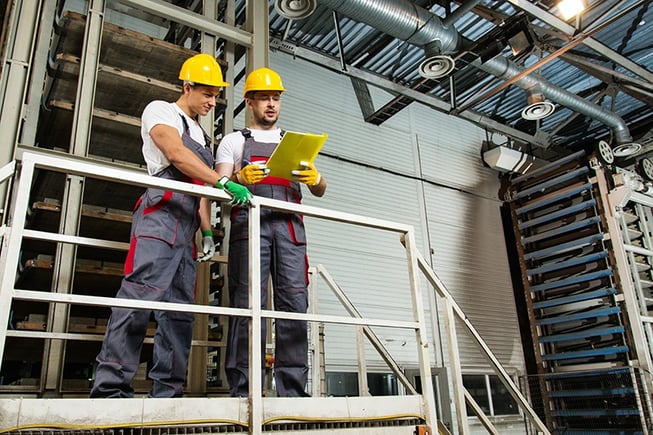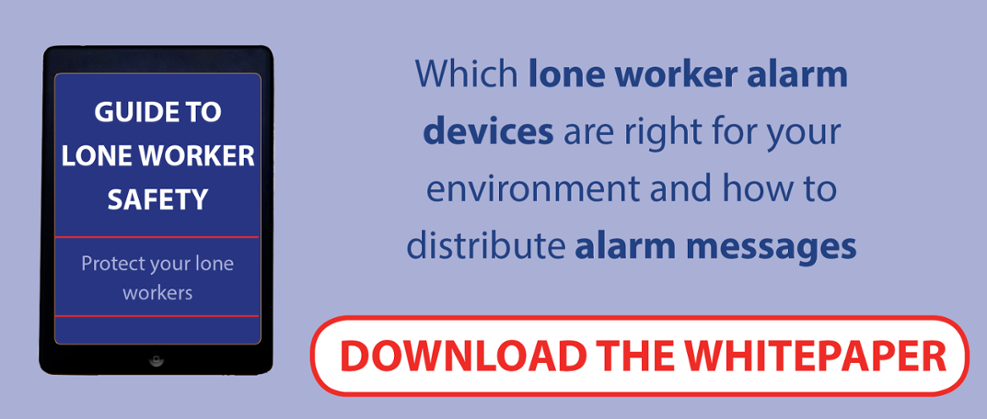
Guaranteeing the safety of lone workers is a top concern in every industry where employees carry out their duties off-site, in a remote corner in the plant, outside office hours, or anywhere else isolated from direct contact with colleagues and supervisors. Having effective and reliable monitoring and communication systems in place remains one of the great challenges in lone worker management and safety, and various strategies for complying with the latest regulations exist. This article will review the once-popular buddy system and highlight the advantages of replacing it with a much more current and efficient solution, namely lone worker devices.
The buddy system: Expensive, unreliable, obsolete
Until technology came to be widely adopted in worker supervision, the 'buddy system' was the gold standard in lone worker safety. It pairs up each lone worker with a colleague and, thus, eliminates the problematic part of the situation, namely 'lone'. It was considered an improvement upon the 'phone call system', under which supervisors would call lone workers at regular intervals to check on them, leaving large chunks of unsupervised time between calls. The buddy system provides uninterrupted human supervision and is somewhat of an improvement indeed. However, this approach hardly solves the challenges of lone work and arguably aggravates and multiplies them.
Personnel costs increase
One obvious shortcoming of the buddy system is the ballooning personnel expense, especially in situations where the task requires only one worker. Then the 'buddy' becomes a mere sitter for his colleague and is likely to experience job dissatisfaction as well.
Two lone workers are hardly better than one
Even if personnel costs are not prohibitive, the buddy system is imperfect in other ways. Most notably, it does not solve the lone worker problem definitively; rather, it creates two lone workers who are stuck in a remote location and are equally hard to reach and communicate with. In certain situations, it can very well increase rather than decrease the risk for worker safety by placing more employees in harm's way.
Obsolete measures struggle to fulfil current regulations
The latest HSE regulation pamphlet does not explicitly consider arrangements such as the buddy system an effective solution to the lone worker problem. Non-automated measures include regular supervisor visits, check-ins at specified time intervals, or automated supervision, among other guidelines. Therefore, regulators too have moved on from this inefficient solution, and holding on to it may well expose your employees to unnecessary risks and your company - to legal action.
Lone worker devices: Modern, effective, reliable
Faced with the obsoleteness and important safety, logistical, and financial shortcomings of the buddy systems, more and more businesses are turning to the strategic implementation of lone worker devices. They offer much closer supervision opportunities, shorter response times in case of accidents, and increased peace of mind for both management and workers alike.
An integrated solution
ANT Telecommunications offers integrated solutions with devices that merge communication, monitoring, and alarm in a single unit. Devices are easily wearable and keeping it along quickly becomes second nature, while its wide functionality ensures your readiness to respond to any unexpected situations.
Rein in personnel costs and increase safety
The overblown personnel costs for the less effective buddy system are much better redirected towards a sate-of-the-art lone worker device system. With that, you get actual safety increases, quite incomparable to simply doubling the number of lone workers without enhancing their supervision or their communication capabilities.
Alarms sound as soon as they should
In any hazardous situation, alarm and response times are key variables in the inevitable cascade of events. Minimising the obstacles to optimal response time is crucial, as even trivial problems can become catastrophic without a timely reaction. Lone worker devices enable workers to sound an alarm as soon as a dangerous situation arises. A pre-alarm is built in to alert workers to accidental triggers, which also lets you save time and resources on false alarms.
Communication made simple
Being able to reach lone workers easily is another perk of a lone worker device. Check-ins become a breeze, and vital information exchanges during a crisis are safeguarded. What used to be a handful of different devices (alarm, walkie-talkie, etc.) is now a neat communication and supervision bundle which can be easily worn at all times.
Keeping track of workers
For monitoring and emergency response purposes, devices are also equipped with accurate GPS, so you can locate your workers easily when an incident takes place. This also takes care of the troublesome manual logging of worker statuses on paper. An easy to use and always accurate system monitors and logs lone worker incidents for you while you focus on the bigger picture.
Getting the best out of your employees
Lone workers are a special class of employee, and their special situation makes them vulnerable not only to the risks of performing their duties alone. They often face increased levels of anxiety, and their performance suffers from the lack of human contact in their immediate working environment. Studies by the TUC confirm that having a lone worker device with alarm and communication capabilities significantly reduces the negative psychological impacts of lone working - another valuable contribution to your business!
Step into the future of lone worker safety!
Automating your lone worker supervision and safety procedures might seem like a daunting task logistically and financially, but it will pay off in optimised prevention, quicker response times, streamlined supervision and log keeping, and peace of mind for both your employees and yourself. In the long run, it is the present and future of lone worker safety.





